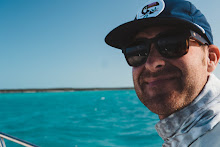When I first entered this hobby I thought it was like sending a man on the moon. There were so many terms and different opinions I never thought I would be able to build something on my own. The only option was buying something already built. After reading and researching there are many sites that have DIY forums to help you out. With my new tank I have been doing most of the work on my own along with a few future projects.
Here are a few builds that I have done myself and hopefully I will be able to assist you in your DIY adventures....
Acrylic Tank
At first I thought all you had to do was buy some acrylic and slap some glue on and wham, bamb, thank you mam and it was done. It is nothing like that nor anything like building a glass tank. You are using an adhesive that bonds the two pieces of acrylic together. The two most popular adhesives are Weld-On 3 & 4 but you can use Weld-On #40. There are a few different ways to build the tank but the most effective way is the pin method. What you are doing is allowing a small gap in between the two acrylic sheets with the pins, then applying the Weld-On with a small needle applicator. Here is a brief run down....
Materials
Needle Applicator - http://www.usplastic.com/catalog/item.aspx?itemid=23000&clickid=redirect
Weld-On - http://www.ridoutplastics.com/ips4.html
Wood Wedge - Home depot sells these for 2$
Acrylic
Router
You can use squares to make sure you angels are squared but if your original cuts are good there is no need.
1st - You will need to get clean edges on the acrylic sheets. They dont have to look polished but a nice clean cut is preferred. I used a router for this and it was a breeze. I recommend doing this outside or in a work room because it WILL get messy. I made the wrong mistake and did this in my living room!
2nd - You will need your back panel and two sides. Lay the back piece on a clean flat surface. Place a wooden wedge underneath the back panel every 6-8". These will come in handy in a bit. Next place a small sowing pin/guitar string on the acrylic top and match it with every wedge. Then place your sides on top of the pins/string ( your acrylic should stand on its own ). Next grab your applicator and fill it with your Weld-on and apply a small amount in between the gaps made by the pins. Have someone come behind you and pull the pins ( or if you have four arms you can do this ;) ). Next is the important part, the wooden wedges you placed under the acrylic are used to force any gaps or air bubbles caught between the two acrylic sheets. A few bubbles are ok but large ones will effect your tank down the road. So wedge, pin it, acrylic sheets, apply, pull and push.
This was my top, I forgot to take photos of the bottom.
3rd - Let each bond sit for 4+ hours.
4th - Do the same but connect the front panel, then the bottom and last the top ( if you are bracing ).
5th - Finished product. I used my router to clean any sides that stuck out. You need a shank router but to do this. This will allow you to cut the excess acrylic off without touching the display part.
6th - Water test.
This is just a run down on building the tank. For me I was able to build the exact size I wanted and save over 50%.
DIY Dosers
Within the past year 2-part dosing has become the easiest way to maintain ALK and CAL parameters. CA reactors are the past!
Bulk Reef Supply sells dosing pump's that already have a housing but run you $99 each. With this DIY project you will be buying the dosing pumps without housing and adding project box to hold them. This will save you around $30-40 and look just as clean as BRS dosers.
What you will need...
Project Box 6"x3"x2" - RadioShack
Dosers - http://www.aptinstruments.com/Merchant2/merchant.mvc?Screen=PROD&Store_Code=AI&Product_Code=SP100FO&Category_Code=SP100
Misc Screws to Mount
Cheap Power Cord
Picture of finished product...
Hope this helps! If you need any help please comment below!
-Dave
Nano-Box
